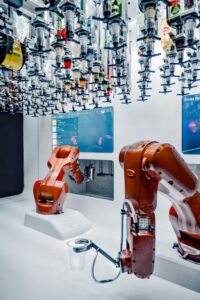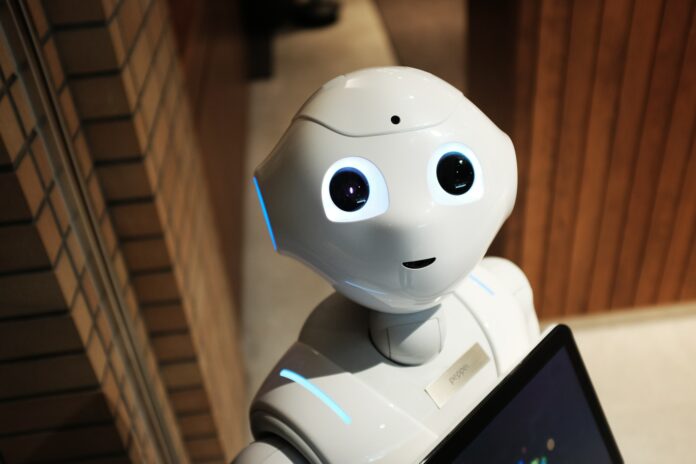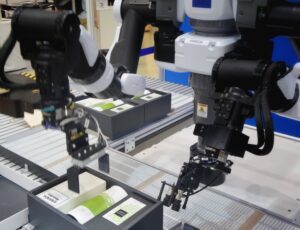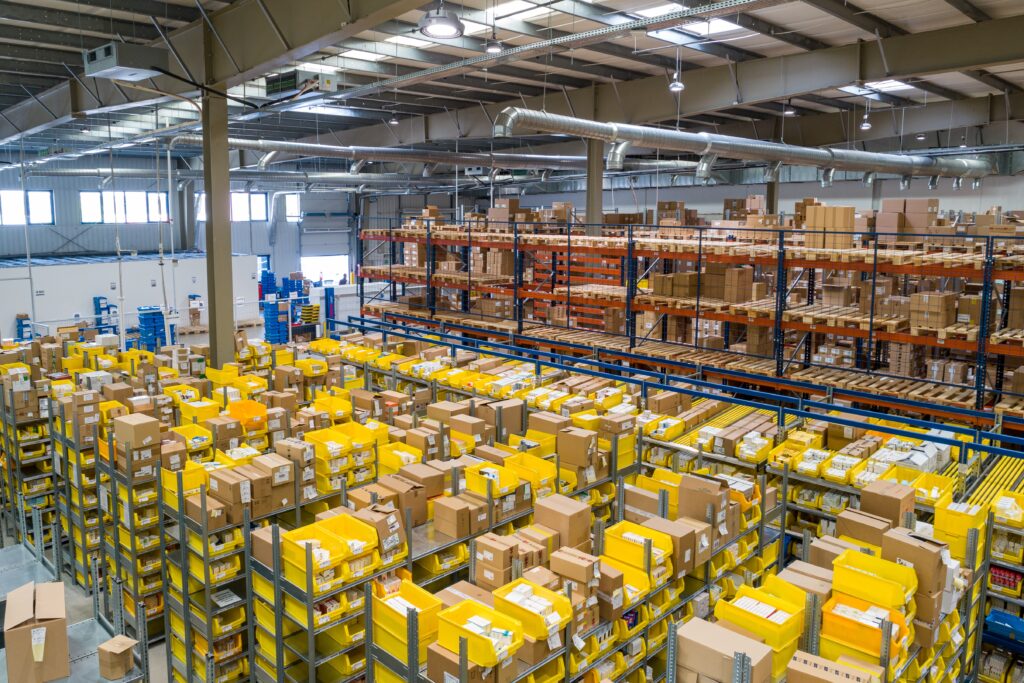When you think of a robot in a factory, you might picture a big arm that puts together car parts or a machine that fills thousands of food packages every few minutes. Industrial robots are fully automated machines that do specific jobs like pumping, labelling, packing, and more. They often work on their own or with other robots and do not require the assistance of humans that much. This is because they usually operate very fast and could hurt people who get too close. Some people view these machines as a threat to jobs because they do manual work that used to be performed by human beings.
A new type of robot called “collaborative robots” is gaining popularity. These robots are made to work closely with people.
How do Cobots work?
 Collaborative robots also called “cobots,” are machines that are meant to work with people. These machines do more of the tasks that are done over and over again, like inspecting and picking, so that workers can do more of the tasks that require them to solve problems. Since they work close to people, they move at a more controllable speed and are set up with sensors that make them stop immediately if a person touches them. Having robots on the production floor has other benefits besides safety.
Collaborative robots also called “cobots,” are machines that are meant to work with people. These machines do more of the tasks that are done over and over again, like inspecting and picking, so that workers can do more of the tasks that require them to solve problems. Since they work close to people, they move at a more controllable speed and are set up with sensors that make them stop immediately if a person touches them. Having robots on the production floor has other benefits besides safety.
Definition of Collaborative Robot
Cobots, or collaborative robots, are designed to operate side by side with employees. In order to free up workers’ attention for jobs that need problem-solving abilities, these machines concentrate more on repetitive duties like inspection and picking. They operate at a slower rate when close to humans and feature sensors that set the machine to shut off instantly when a person comes in contact with them.
Having a collaborative robot on your production floor has several benefits as explained below:
- A Breeze to Set Up – Collaborative robots are often small and easy to use, unlike their bigger industrial-grade brothers, the robots. Employees need little or no programming skills to operate them. It is easy to teach your employees how to use and program these robots Some companies can even get cobots up and running in just a few weeks. Collaborative robots are unlike industrial bots that can only be changed by experts and take several months to set up.
- Versatile – Collaborative robots are designed to take on various tasks at once. As long as you have the right end effectors, it only takes a few minutes to program packing cobots to do functions like labeling or inspecting. Some bots are mobile, so they can be easily moved to another terminal to help out if needed. They are much easier to use than other industrial robots, which need many changes to their software and hardware in order to be used for different tasks.
- Empowers Workers – Most injuries, like carpal tunnel syndrome, hernias, and back pain, are repeatedly caused by doing the same task. In 2018, the Bureau of Labor Statistics found that almost 39% of musculoskeletal disorders in American workplaces were caused by back injuries or pain. The robots can easily take over work that employees do by hand.
Not only will workers have more time to do creative work, but they will also be less likely to take sick days because of work-related injuries.
Wide Range of Applications
ABI Research, an analytics company, says that the collaborative robot market will be worth more than $11.8 billion by 2030. From $711 million in 2019, this is a huge jump. This optimistic prediction is based on the fact that cobots are being used increasingly in many industries. The company also said big companies don’t just use these machines. Small and medium-sized businesses are also buying units to use in production. Here are some of the sectors where cobots are most helpful.
Cobots have gained popularity in the manufacturing sector thanks to their adaptability. They do several different tasks on the production floor. These consist of:
Everything is in its place – Cobots can be outfitted with cameras or sensors that scan various product components for flaws.. To make sure that certain components are sorted into the appropriate stream on the assembly line, they are utilized to measure those components.
Precise Tool Handling: These robots are used by businesses to handle process activities like soldering and welding because they are so accurate. They can complete these jobs without any hitches on a daily basis and even after hours. They also make few to no mistakes, allowing you to relax knowing that the quality of your products is always high.
A Perfect Finish: Machines may also be equipped with force sensors, which track the amount of pressure a robot applies to objects. Cobots can give any product a consistent finish with attachments for sanding, painting, and other tasks.
Suitable for Logistics
Collaborative robots are popular in logistics as well because they make deliveries quicker. They are extensively used in this industry, with Amazon’s warehouses as a notable example. They use cobots to move objects from one location to another while detecting a piece’s fragility and adjusting their grasp accordingly. Here are some further applications for collaborative bots in logistics.
Doing the Heavy Lifting: Mobile cobots may be assigned to transport items along a predetermined path. These reduce the need for employees to lift bulky boxes by hand or operate large machinery like forklifts.
Sealed and Delivered – Like with part inspection, equipping a bot with cameras can transform it into a precise and effective picking device. Additionally, they may create cartons, fill them with goods, and seal them using a gripper or suction cups. Fulfillment is significantly more accurate and efficient as a result.
Collaborative robots demonstrate that automation and AI are not designed to replace humans on the manufacturing line. Instead, they enhance the welfare of workers on the factory floor. They provide workers with possibilities to take on employment that requires more ingenuity than brawn by doing repeated tasks. Furthermore, because cobots frequently perform repetitive and occasionally risky tasks, they help to keep workplace injuries to a minimal.









